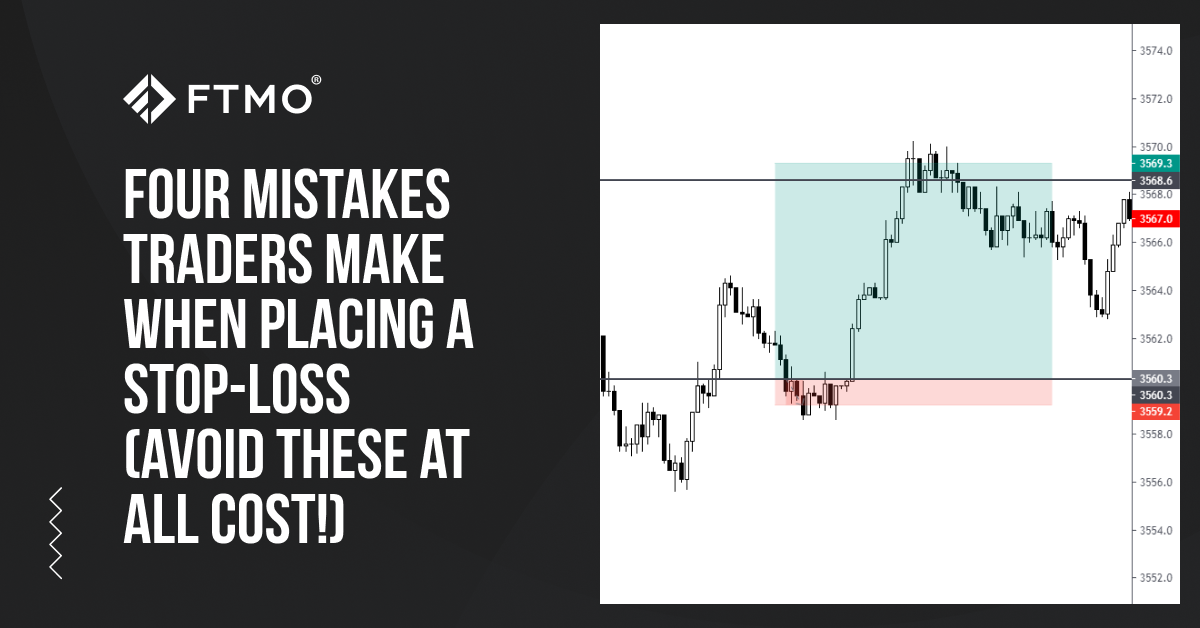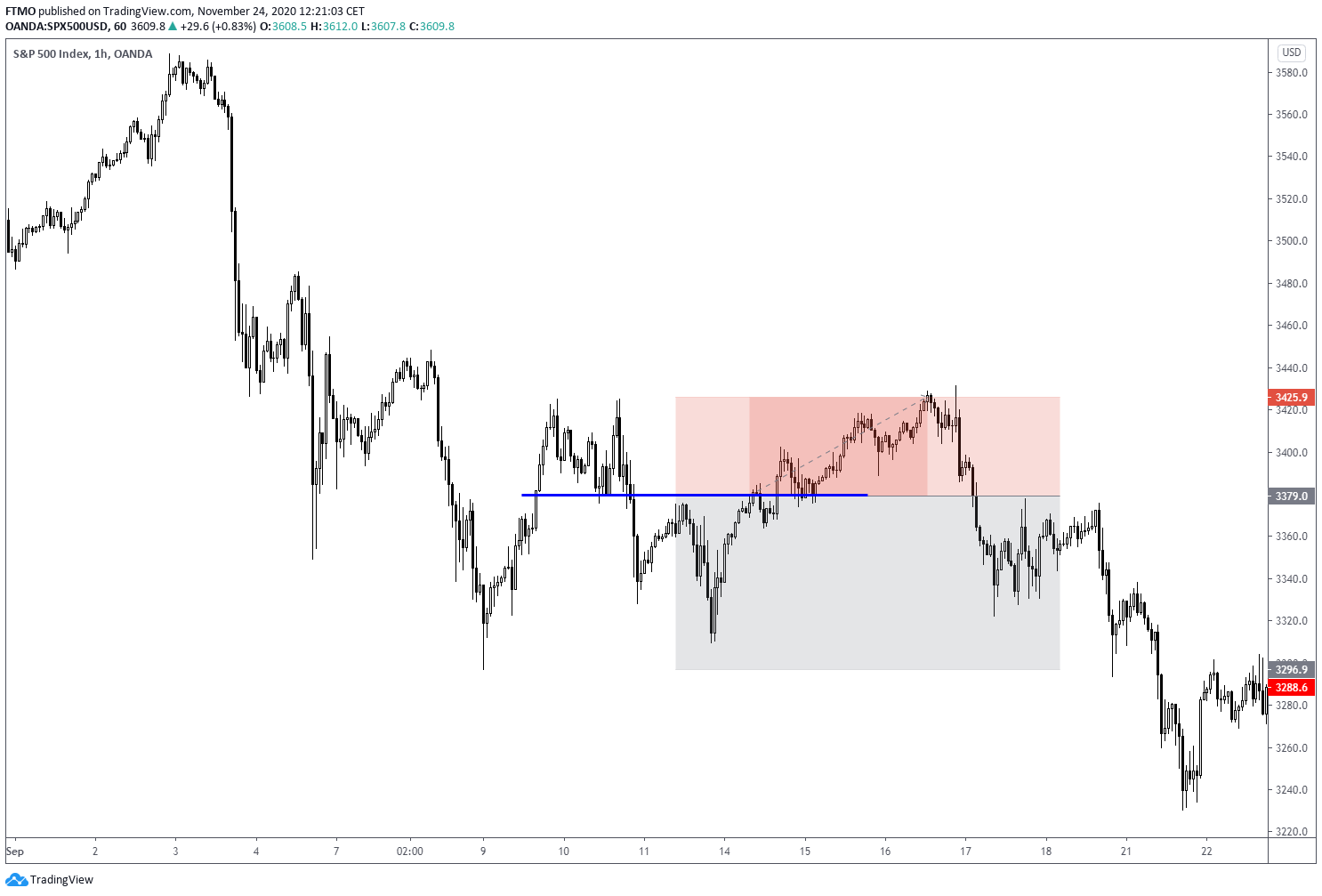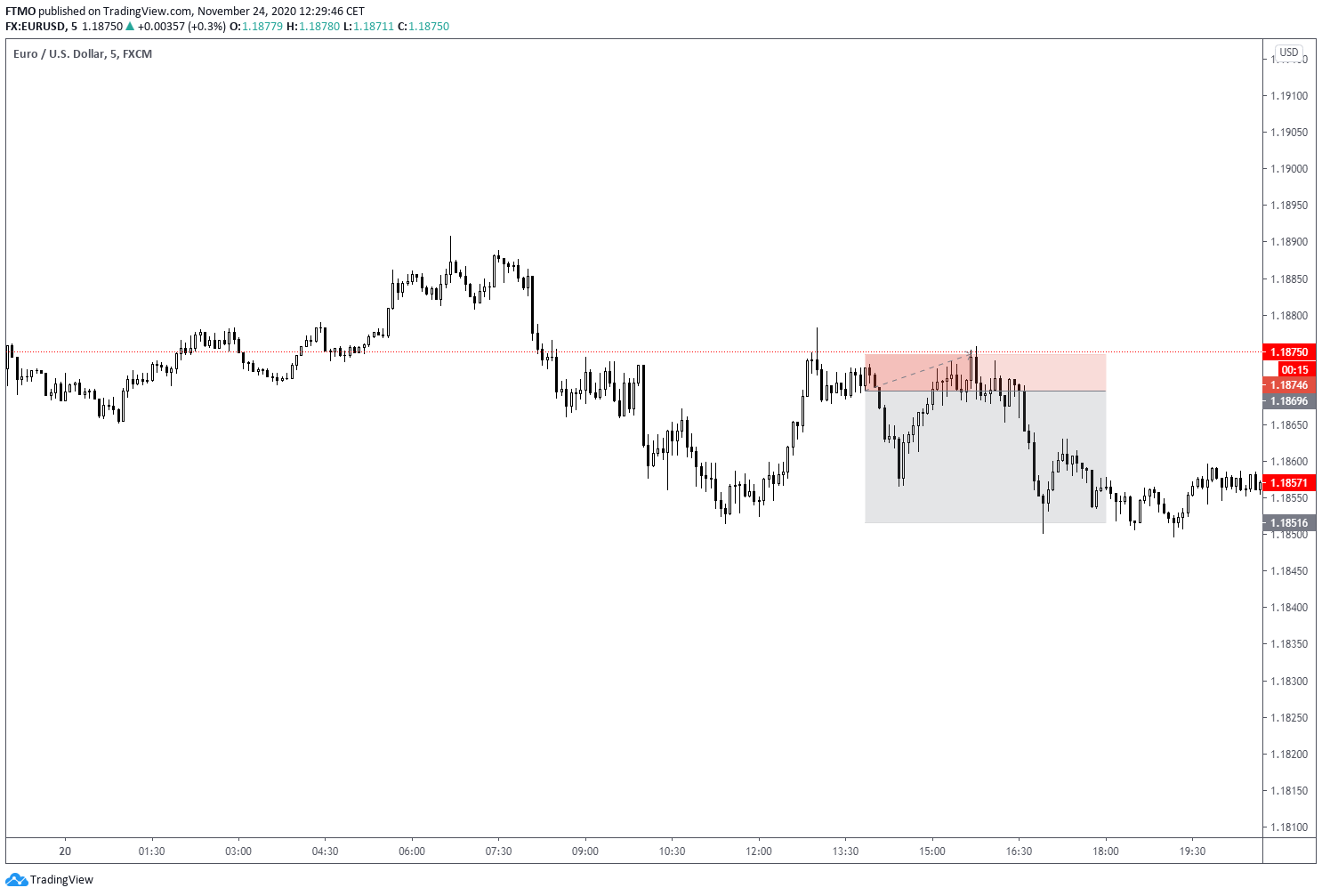
Four mistakes traders make when placing a Stop Loss (Avoid these at all cost!)
Have you ever placed a trade with a Stop Loss, just to watch the market taking you out and continuing straight to your desired direction? This is a common situation traders find themselves in when placing their Stop Loss. In this article, we break down some common mistakes and also share some valuable advice on how to avoid them.
Stop Loss is too tight
This is often the case of the market stopping traders out before going in their desired direction.
If you have a tight Stop Loss, you might increase the position size if your target success rate is high.
Although this can work out from time to time, we cannot let the greed of monetary gains cloud our analysis of the market.
To fix this problem you can never let greed overcome you when you are calculating the size of your position and place your stop at a technical level where you know you are wrong on your idea.
Otherwise, you will end up like those traders who always get stopped out before the market goes in their direction, and no one wants that!
Stop Loss is too wide
The opposite of a tight Stop Loss is having it too wide.
A lot of traders are scared of losing money so every time they enter the trade they use very wide Stop Losses to avoid getting stopped out.
The problem with this is that your RRR gets very skewed because you can only open very small positions.
How to fix this?
The answer for this is journaling and taking notes about your Maximum Adverse Excursion.
Maximum Adverse Excursion measures the largest loss suffered by a single trade while it is open.
So if you enter the trade with 40 pip stop and 100 pip target and the trade goes 20 pips against you first, your MAE is 20 pips.
By taking notes in your journal about MAE, you can easily find out your MAE and tighten your Stop Losses.
Not to make them too tight, but to adjust them based on your trading results.
Placing a Stop Loss at a level where everyone else does
Technical trading education has been the same for years. Chart patterns, double bottoms, tops, head and shoulders, etc.
A lot of traders know and use these in their decision every day.
This brings out the question when there is something everyone uses, isn't it too obvious?
You very often see these levels and areas that are taught in technical analysis books and videos to get probed first before the real move happens.
A lesson in that? Be aware of areas where there is a great likelihood of other traders stopping out as well and try to adjust your Stop Loss according to that.
Otherwise, you can end up like traders who entered a position based on a break of the neckline in this double-bottom scenario with a stop above the high.
Stop Loss based on fixed pip/dollar amount
Most traders use technical analysis in their trading.
One of the most un-technical things to do is to place a Stop Loss at a random level based on pip or dollar value.
In practice, imagine you open 1 lot on EURUSD and where 1 pip equals $10.
Instead of finding a great technical spot where it makes sense to get out of the trade, you just tell yourself you don't wont to risk more than $50, therefore your Stop Loss is 5 pips.
As you can imagine, the market does not care if you have your Stop Loss with 5 or 10 pips. Therefore you always should put it a place where you are technically wrong on the idea.
Conclusion
We hope you liked this article and it will help you in more efficient Stop Loss placement.
If you are struggling with placing your Stop Loss, there is no better way to fix it than proper journaling.
This way you will see your past trades and you can quickly analyze what went wrong.
All information provided on this site is intended solely for the study purposes related to trading on financial markets and does not serve in any way as a specific investment recommendation, business recommendation, investment opportunity, analysis, or similar general recommendation regarding the trading of investment instruments. The content, in its entirety or parts, is the sole opinion of FTMO and is intended for educational purposes only. The historical results and/or track record does not imply that the same progress is replicable and does not guarantee profits or future profitable trading records or any promises whatsoever. Trading in financial markets is a high-risk activity and it is advised not to risk more than one can afford to lose!
About FTMO
FTMO developed a 2-step Evaluation Process to find trading talents. Upon successful completion you can get an FTMO Account with a balance of up to $200,000. How does it work?.














